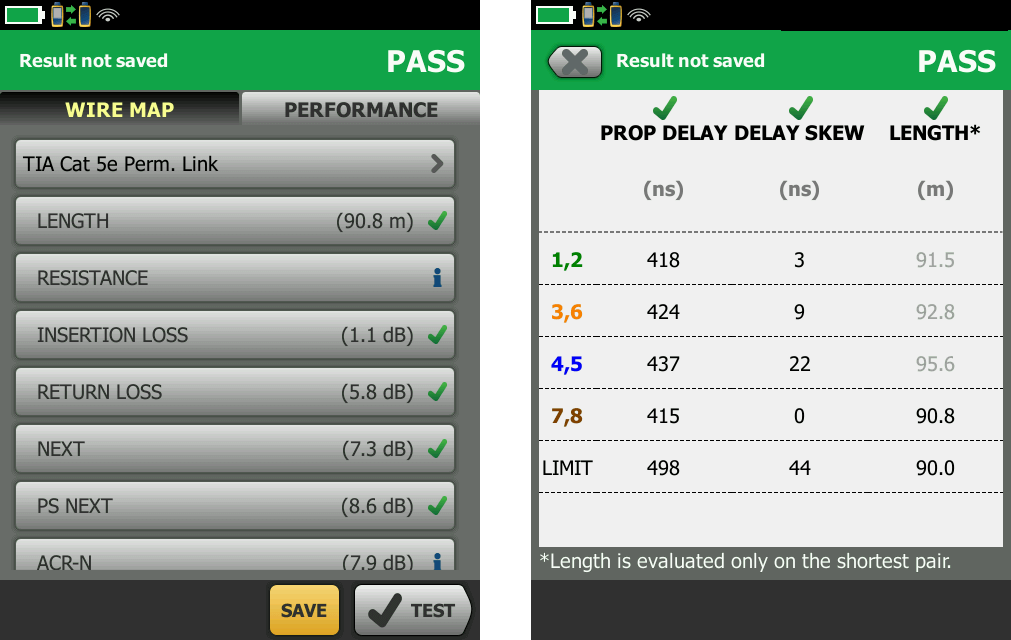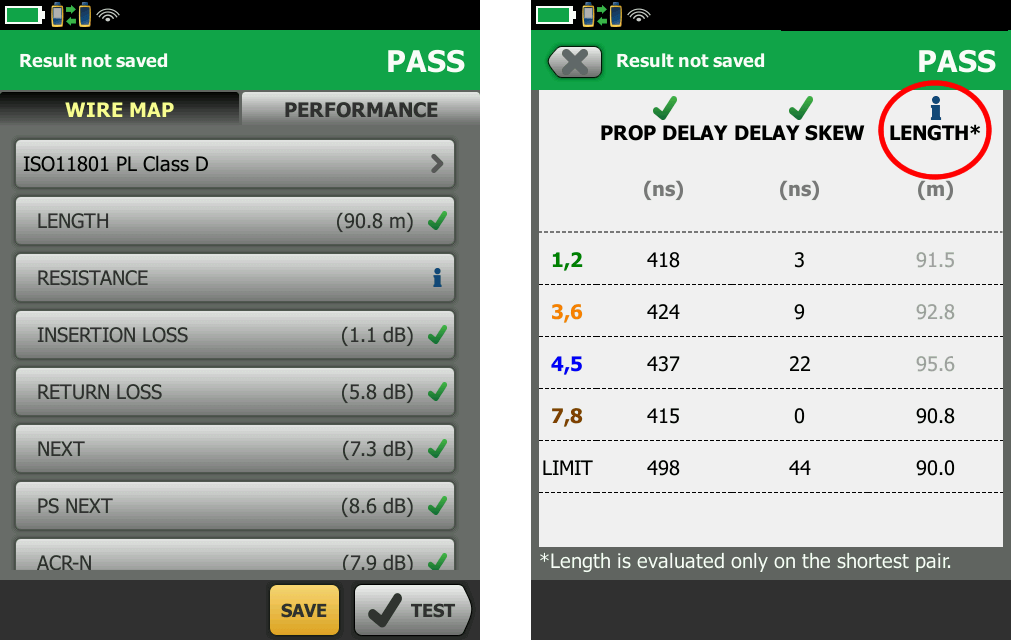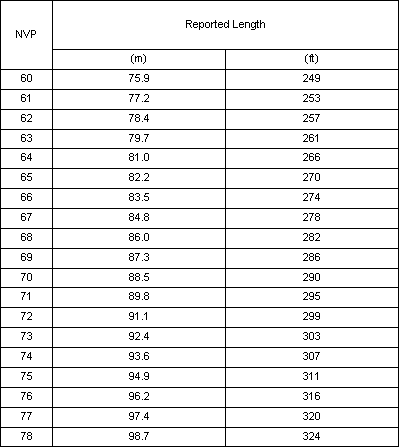Length measurements for the DSX CableAnalyzer Series Testers
Length measurements are derived from propagation delay, where a 10 MHz signal is sent down the cable and returned. The time it takes for that 10 MHz signal to travel down the cable and return from the far end is then used to calculate the length. For this to work, the field tester needs to know how fast that 10 MHz signal is expected to travel in that particular cable. For this, the industry and field testers use something called the Nominal Velocity of Propagation (NVP), which is typically expressed as a percentage (%) relative to the speed of light in a vacuum (300 000 km per second). The cable vendor will state the NVP for their cable. This could be between 56% and 78% depending on the cable design. The NVP % is calculated based on the shortest pair within the sheath.
10% Rule
There will be uncertainty in setting the NVP. ANSI/TIA-1152 recognizes this, stating; "The pass or fail criteria is based on the maximum length allowed for the channel or permanent link as specified in ANSI/TIA-568-C.2 plus the nominal velocity of propagation (NVP) uncertainty of 10 %." What that means is that if your length limit for any given ANSI/TIA standard is 90 m or 295 ft., the length test will not fail until the length has exceeded 99 m or 325 ft. Where 90 m or 295 ft. is the typical limit for a Permanent Link test. For a Channel test, the typical limit is 100 m or 328 ft., so again, the length measurement will not fail until the length has exceeded 110 m or 361 ft.
In the example below, we see that the length (based on the shortest pair) exceeds the limit by 0,8 m, yet it passes - because of the 10% rule in ANSI/TIA-1152.

This is NOT a license to exceed 90 m/295 ft. for Permanent Links or 100 m/328 ft. for Channels. If you exceed these design lengths, expect Insertion Loss to fail.
Length ignored
In the ISO/IEC11801:2010 standard, length is not required for compliance. So you will see an 'i" above LENGTH. The logic being that if Insertion Loss, Propagation Delay and Delay Skew Pass, which are all length based parameters, the application will work just fine - which logically speaking is correct.

NVP set incorrectly?
You can certify the link in LinkWare PC Software with a new NVP value to see how the length is affected with the new NVP value. No other parameter is affected. As a guide, the following table is offered to indicate the impact of an incorrect NVP setting in the instrument.






